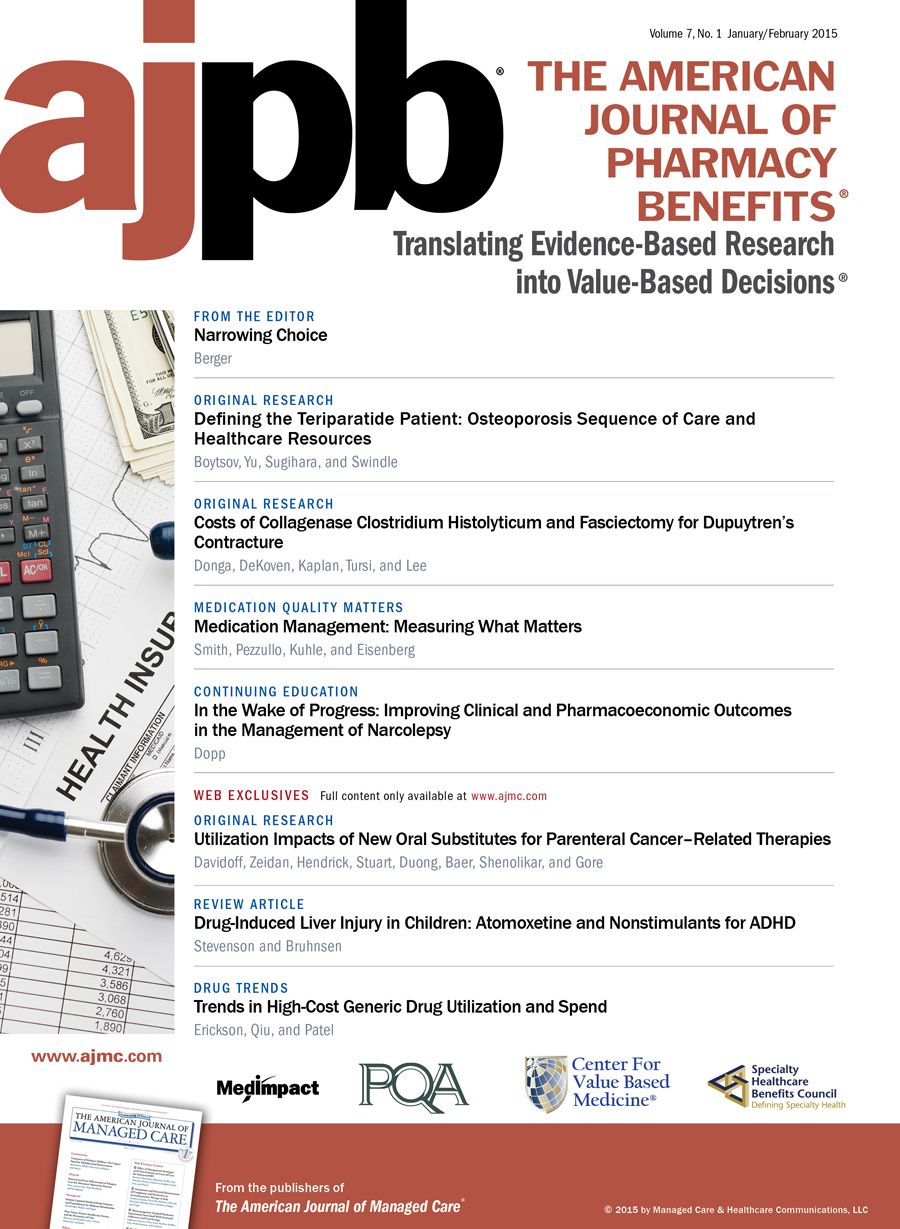Publication
Article
AJPB® Translating Evidence-Based Research Into Value-Based Decisions®
AJMC Panel Discusses the State of Mental Healthcare Post ACA
Although care for patients with mental illnesses has come a long way, a panelist of individuals who work with or advocate for these patients recognize that change has been slow and there is still much left to do.
In the past 2 years, 10 states have decreased funding for mental health treatment despite the fact that approximately 10% of adults have a mood disorder and 18% suffer from an anxiety disorder. Furthermore, a Kaiser Family Foundation study found 2.7 million uninsured Americans suffer from serious mental illness.1
In a panel discussion for The American Journal of Managed Care, experts discussed issues including earlier screening for mental health disorders, treatment adherence and the matter of nonadherence, and improving mental health outcomes with collaborative care.
Surabhi Dangi-Garimella, PhD, managing editor of AJMC’s Evidence-Based series, moderated the discussion, which featured Stuart Lustig, MD, MPH, lead medical director for Child & Adolescent Care at Cigna Behavioral Health; Paul Gionfriddo, president and chief executive officer of Mental Health America; and Wayne Katon, MD, director of the Division of Health Services and Epidemiology and professor and vice chair of the Department of Psychiatry and Behavioral Sciences at the University of Washington Medical School.
Identifying Mental Disorders Earlier
If a country does not have enough mental health clinicians to treat all people who have disorders, then the issue of access is especially troublesome for children. Dr Lustig explained that there are less than 2 child psychiatrists for every 1000 kids with severe mental illness. Moreover, half of mental illnesses manifest by the age of 14 years, which makes it necessary to screen earlier, Mr Gionfriddo added.
“We let years go by without getting kids appropriately and properly screened and identified; we let years go by without getting them into the special [education] services they need in order to be able to succeed in school,” explained Mr Gionfriddo. “And then when they become adults, we wonder why it is that they end up in our jails and out on our streets.”
Mental Health America’s online screening tool has found that people who screen positively for early stages of mental health disorders often have not been diagnosed.
“We say [at Mental Health America] that mental health conditions are the only chronic conditions that, as a matter of public policy, we wait until stage 4 to treat, and then only through incarceration,” Mr Gionfriddo said.
Comorbidities and Adherence
While all medical illnesses have issues related to nonadherence, the barriers can be slightly different in mental healthcare. One such complication is primary care physicians often resorting to prescribing medications that may be inappropriate and ineffective when they cannot get their patients into needed therapy.
“And then when [patients] need [the medications] for a condition that is real, there’s resistance to them,” Mr Gionfriddo said.
Even when the right treatment regimen is prescribed, the physician has to make a number of assumptions that could be incorrect, Dr Lustig said. Physicians are not only presuming their patients can afford the medications, but that the patients are comfortable with the idea of taking the medication.
“There are lots of reasons why people are particularly leery of psychiatric medications,” he said. “They certainly have a lot of stigma as they are portrayed by the media, for example, or by Hollywood over the years.”
Other considerations that should be taken into account are the complications of treating patients who are also suffering with other chronic conditions. Dr Katon pointed out that not only do conditions like heart attack, diabetes mellitus, and stroke cause depression, but likewise, depression and anxiety are risk factors for developing diabetes mellitus or heart disease.
“It’s a tremendous adjustment when you develop a chronic medical illness and if you have a problem like depression or anxiety,” he said. “It really impedes your ability to adapt to that medical illness.”
Team-Based Care
While the Mental Health Parity Act—which requires that coverage limits for mental health not be less than those for medical benefits—will likely increase access to care for patients with mental health issues, getting the patient from the primary care physician’s office to the psychiatrist’s will remain a challenge, the panelists predicted.
Approximately half of the people who visit a primary care physician with the side effects of anxiety or depression are not correctly diagnosed. If they are, the referral rate for getting patients to see a mental health provider is abysmal.
Dr Katon promotes collaborative care for mental health patients, which places the mental health professional alongside the primary care physician to ensure better diagnoses. The model being implemented in Washington state uses a team-based approach to improve the outcomes of patients with mental health disorders who are entering the system through the primary care office.
“I think we have to move away from the idea that we’re going to train enough psychiatrists or child psychiatrists to treat all people with mental illnesses,” Dr Katon said. “We do need team-based approaches.”
To hear the full discussion, please visit http://www.ajmc.com/ajmc-tv/panel-discussion/breaking-mentalhealth-barriers.







